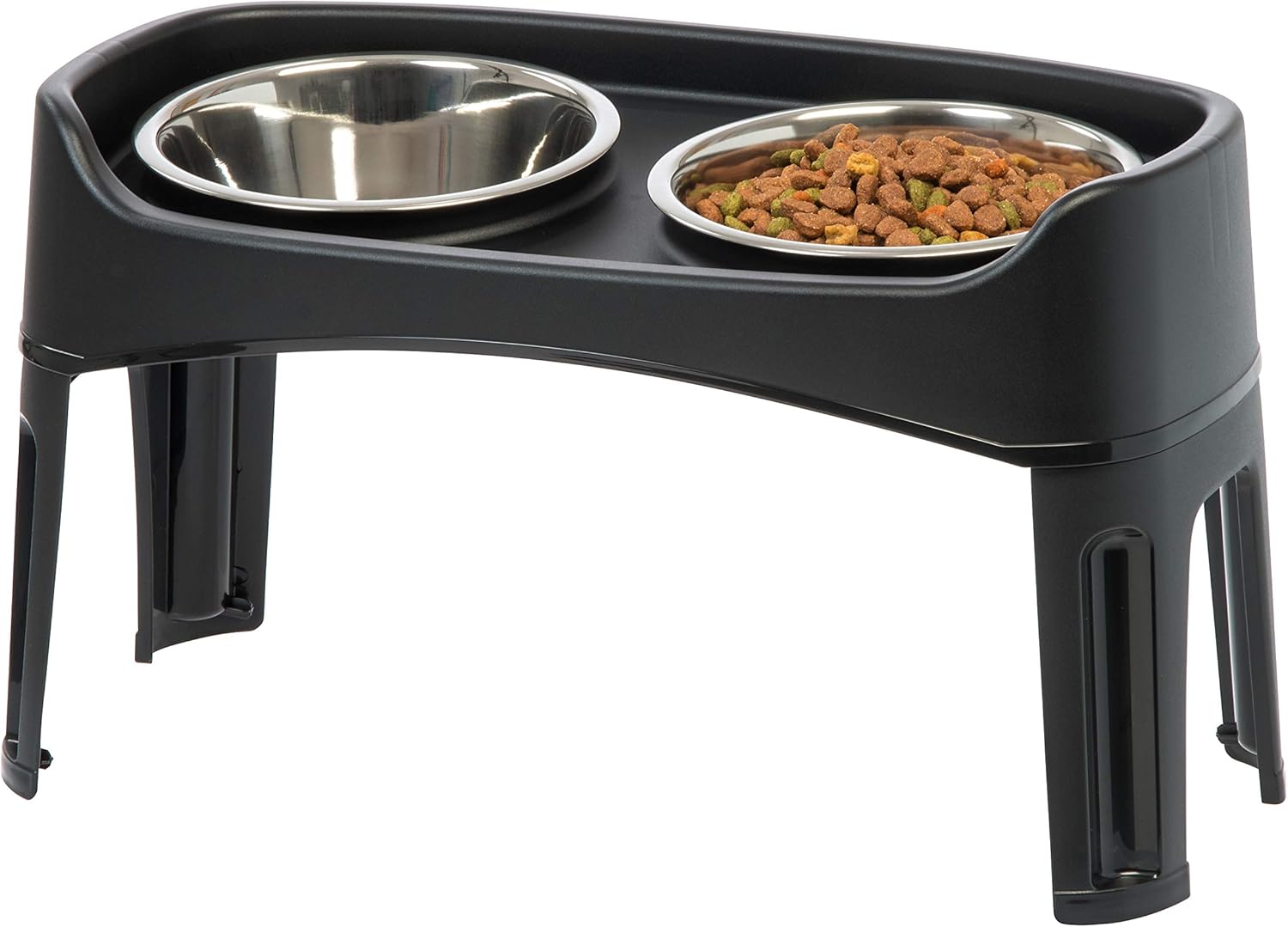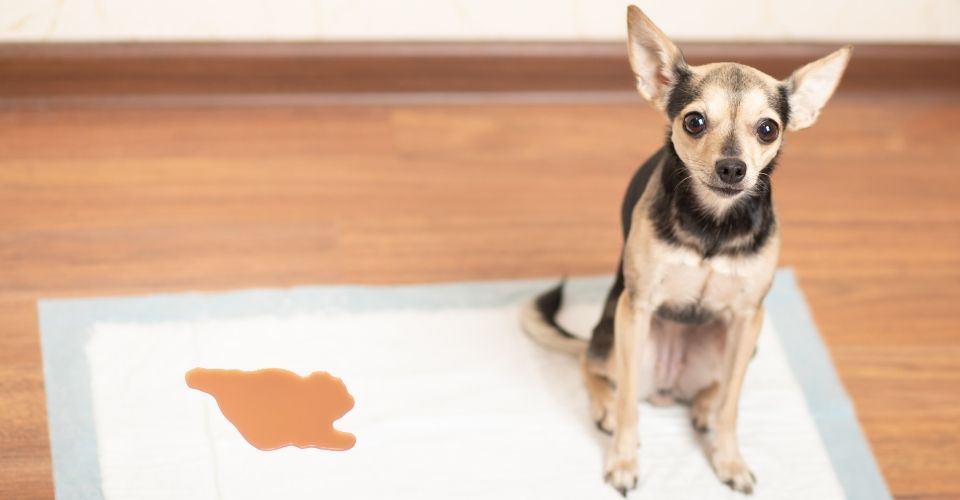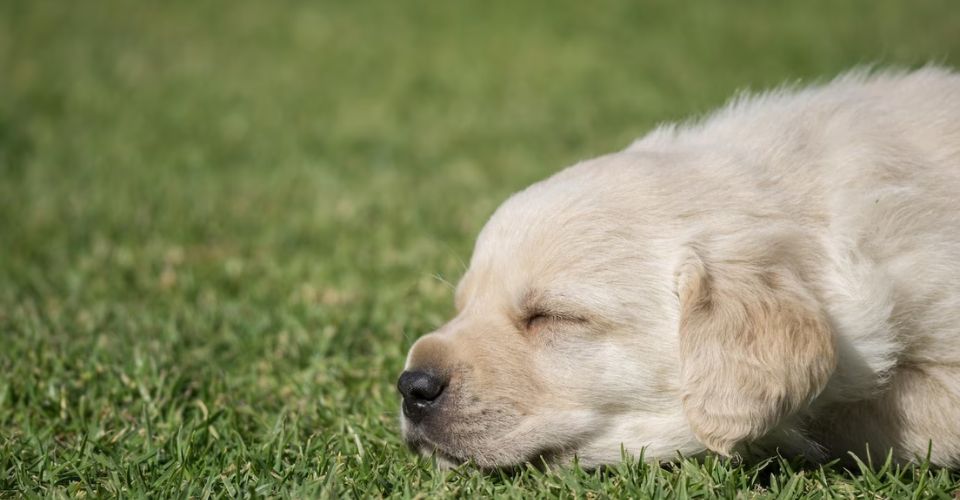The world’s most loyal creature, also known as a man’s best friend, suffers from this congenital condition, which is medically referred to as short spine syndrome.
Short spine syndrome is a rare genetic disorder in dogs that causes compression of the spinal cord. This compression causes the vertebrae to remain in their cartilage state rather than transforming and strengthening into bone. The vertebrae are fused together, giving the dog an appearance of a very short neck or no neck at all. Hence, these pups give the impression of being hunchbacks.
Risk Factors
A study has shown that 1 in 1000 dogs in a dog’s population suffers from this affliction. It has been concluded that multiple instances of inbreeding—carried out in the hope of producing litters with similar and desirable characteristics—have caused this genetic condition among dogs.
Signs and Symptoms
It doesn’t exactly take a vet to recognize a dog with short spine syndrome, as it is quite apparent. A few typical traits that distinguish them from other doggos are as under:
- A sloping back
- Short, broad neck—giving an appearance as if there is no neck
- Elongated jaws
- Rear legs longer than front legs
- Shorter and twisted tail or no tail at all
- Missing ribs
- Barrel-shaped chest
- Shorter body in relation to its limbs
- Oversized ears
These dogs cannot simply turn their head if they want to itch or look behind. Instead, they must turn their entire body. They might also have difficulty eating or sniffing from the ground. Furthermore, because they struggle to stay on hard surfaces, playing fetch or going for a long walk is not their cup of tea like other canines.
Despite their disability, they are considerably playful and are able to lead a healthy life with a normal lifespan.
Complications and Associated Medical Conditions
There are some complications that dogs with short spine syndrome are more prone to, which include the following:
Lumbosacral Syndrome
This causes the compression of sacral nerves or degeneration of the lumbosacral junction. Your canine friend may have difficulty in climbing, jumping, or standing from sitting. Also, he can develop a constant backache with muscle atrophy in their rear legs, along with fecal or urinary incontinence.
Typically, some bed rest, anti-inflammatory drugs, and physiotherapy can relieve your doggy’s pain and improve his quality of life. But we advise not to procure any drug on your own without consulting a vet.
Intervertebral Disc Disease
An intervertebral disc cushions a dog’s spine. In case this disk ruptures or herniates, it can cause dogs immense pain and overall trouble in mobility. Severe cases can progress to paralysis. Conservative management is recommended in dogs with mild deficits or pain only.
However, if the disease progresses towards paralysis, surgery will be the recommended treatment of choice. Consult your vet; he or she will examine the dog and will suggest the way forward.
Screw Tail
Due to the fusion of the vertebrae in these hunchbacks, their tail takes an abnormal curve and shape, causing excessive skin folds and an anal obstruction. This creates a structure typically known as a corkscrew or screw tail. The skin folds are predisposed to infections which can be treated with antibiotics and regular cleaning. Ultimately though, surgery is required to amputate some or all of the tail.
Special Adjustments
In the same manner that humans with any syndrome learn to thrive, dogs’ bodies, too, learn to adapt according to their special needs. However, to make life a bit easier for these crook-backed fellows, their owners should take note and modify some of its care regimens.
Feed
You can elevate your pup’s food bowl, as his short spine makes it hard to lower his head to the ground.
The quantity of the feed should also be about two-thirds or half of a regular dog meal, as you would want to avoid overfeeding and weight problems.

Shorter Playtime
These furry hunchbacks get tired quickly, so their pet parents should play or walk for half the time as compared to a normal dog’s playtime. Additionally, steer clear of activities involving running and jumping—these may leave them vulnerable to muscle spasms and back issues in the future.
Massage Therapy
Since these fluffy friends cannot turn to scratch themselves, regular soft massages will help in blood and lymph circulation, especially to the muscles more in use. Moreover, it will relieve the affected dog from stress, anxiety, and any backache. Besides, massage always strengthens the bond between the pet and its parent.
So far, about thirty dogs are known to have short spine syndrome worldwide. Many are now widely recognized as internet sensations, including the famous German shepherd pup Quasimodo, named after a fictional character in the novel The Hunchback of Notre Dame.
After he went viral, more and more short spine syndrome stories—told by their owners, of course—started making rounds on the internet. There’s Cuda, the Pitbull, who has got her own Facebook page with many likes and fans. And Mojo, a gorgeous Spaniel crossbreed, from Ohio. Pig The Unusual Dog is another beautiful Chow breed with short spine syndrome that draws attention and love wherever she goes. Her story helped her become quite the celebrity.
Despite the challenges faced by them due to their condition and the fact that many had troubled starts in life, all these adorable pups are enjoying healthy and happy lifestyles.
It is heartbreaking to know that some of these affectionate creatures are abandoned, or worse, euthanized.
In conclusion, regardless of their affliction, dogs with short spine syndrome are no different than other canines. They have so much warmth and love to give out, as proven by the many examples circulating around the world—and the web.
Next time you find an abandoned pup for adoption, do not hesitate, as it will constantly remind you how being unique is a special thing, blessing you with love and a sense of gratefulness. Feeling sorry for them should not be an option, as they are worth all the endearment.





